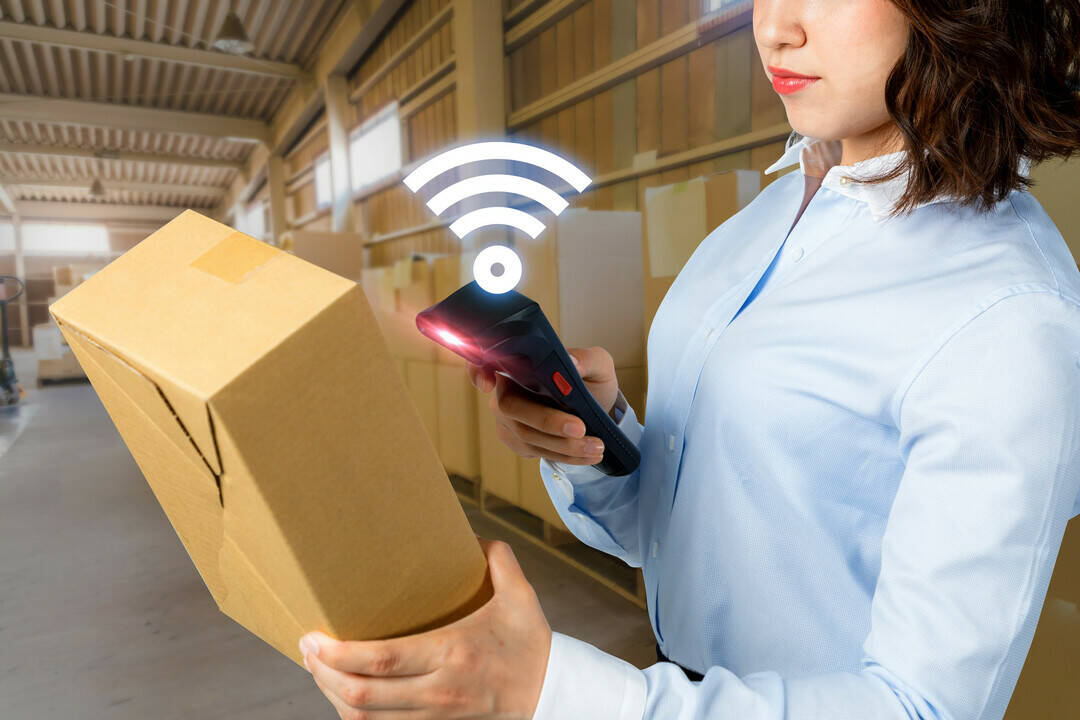RFID Digital closing
What is RFID?
Literally translated means RFID "Radio Frequency Identification“. RFID is a technology that is often unconsciously encountered by most people in everyday life. RFID systems enable data to be read out or stored contactlessly. The data is transmitted via a radio signal so that the medium can be registered without necessarily being seen or touched.
Development of RFID
RFID systems were developed back in the 1960s. At that time, the technology could not yet prevail due to the high raw material costs (chip prices, etc.). Ten years later, the technology was used as goods theft protection. Subsequently, systems followed to identify animals. At the end of the 20th century, the revolution in RFID technology succeeded as RFID transponder prices fell and evolved gradually. Today, not only companies are investing in contactless systems, private individuals are also using RFID technology in the private sector. The areas of application now encompass a wide range of sectors and areas, such as digital access systems or cashless payment.
What are the components of an RFID system?
RFID systems basically consist of a reader (RFID reader), an identification medium (RFID transponder/tag) and software in the background (backend).
RFID-reader
The information stored on the identification medium is read out by the reader. This can happen in different ways. Among other things, there are fixed readers as a reading station on doors or doors, but also mobile variants in the size of a smartphone.
RFID-Transponder are divided into the following categories:
- Passive RFID-transponders draw their energy for data transmission from the RFID reader's electromagnetic field. They have a range of a few metres.
- Aktive RFID-transponders have their own energy source (battery) and are able to transmit data from a distance of up to 100m.
- Semi-passive-transponders have an integrated energy source for self-supply, but still require an external power source for reply.
Transponders can store different information depending on the area of application. The memory sizes range from a 1-bit memory (e.g. for goods protection) to 8 kilobytes (e.g. for security protocols).
Software
RFID software controls data exchange between the two hardware components and manages information processes. Generally, a database with the necessary information is stored in the so-called "backend“.

How does RFID technology work?
The transponder serves as a data medium for the system and contains a microchip and a coupling element. If the transponder is passive, it is completely inactive. However, as soon as it is within reach of the reader, the identification medium reacts to be registered. Both devices balance each other and as soon as they are within reach, signals can be sent and received.
Specifically, the reader generates an electromagnetic field which is received by the transponder antenna and forwarded to the microchip. The magnetic field transmits the command to identify and query the stored information on the transponder (e.g. the serial number). The transponder recognises the friend device and its command, so that the required data can be transmitted to the magnetic field and recorded by the reader. This identification process takes just a few seconds.

Benefits of RFID systems
Probably the biggest advantage of RFID technology is contactless identification, which enables contactless communication between transmitter and receiver. In the past, goods were scanned by barcode, which led to high wear. Nowadays, lightning-fast identification takes place within a radius of up to one hundred metres and is capable of penetrating several materials. This means that not only objects can be detected within seconds, but also animals or people. Another advantage is the nature of the identification medium. The shape and size of the microchip with antenna can be individually adapted to the requirements and integrated into the product. Conventional transponders are therefore weather-resistant.
Even under severe environmental influences, they are resistant and readable at all times. In the logistics sector, so-called "desk recording" also offers considerable added value when it comes to recording several data carriers or tags within seconds. However, even when it comes to providing people with access to buildings or areas, identification using RFID technology offers a significant advantage, as keys can be replaced by individually writeable transponders.
Thanks to its robust material properties, the use of RFID technology is ideal for industry and production. For example, individual production steps can be identified in order to map processes. Tags are also used to clearly identify components, materials and spare parts. This identification makes it possible to identify counterfeits of individual parts.
In the logistics area, containers are equipped with chips, which makes marking and reading much easier. This enables the contents of the individual containers to be easily identified at the port or during customs controls. Storage systems also benefit from RFID technology. Here, hundreds of products can be scanned at the same time and processes within production and logistics chains can Image tag: "RFID technology" be optimised. This applies in particular to intelligent storage systems in which automated processes take over the filling of shelves. Inventories can also be recorded within seconds.
RFID systems are also already in use in everyday life. The passport, for example, is equipped with an RFID chip on which the digital passport photo and fingerprints are stored. When making contactless payments, we also use a credit card with an integrated RFID chip, which contains our account details. All you have to do at the checkout is read them out. But even this could soon be a thing of the past. The first supermarkets have already tagged their entire assortment. The cashier no longer has to scan the items individually. Instead, the entire shopping basket is registered and settled without personnel at the checkout. Another huge application area is the use of RFID technology in the area of "digital locking".
Digital locking thanks to RFID technology
Digital locking with RFID offers a wide range of options when it comes to implementing access control without keys. Contactless digital locking gives individuals or groups access to specific buildings, rooms or areas.
There are basically two digital locking systems:
Digital locking devices in online mode are connected to a central computer. This enables access authorisations to be queried and updated immediately. If an access medium (transponder or key card) is lost, it can be immediately blocked and replaced at the push of a button.
Offline systems, on the other hand, do not have a constant connection to the control centre. In these cases, a list of authorised persons is stored locally. When scanning, a check is carried out to determine whether the respective identifier is stored in the list. If a match exists, access is enabled. When digital locking with offline systems, the transponders must be programmed separately and updated in the access list.

Digital locking devices can be used to secure company security areas or access by public institutions. Transponders or keycards are electric strikes which open doors in employee IDs or as a key fob, for example. But it is not just doors that can be opened thanks to digital locking. Access to lifts, barriers, key safes or fire service key depots is also guaranteed. In addition, it can be traced at any time which person has been granted access and at what time. Logging also records unauthorized accesses or the duration of the stay. This means that it can be traced at any time how long certain groups of people stayed in the building.
Digital locking with access systems from experts
SimonsVoss, the pioneer in RFID controlled, wireless locking technology, offers system solutions for medium-sized and large companies as well as public institutions. The digital access systems replace mechanical keys with digital transponders, PIN code keypads or smartphones. Mechanical cylinders are replaced by high-quality digital locking cylinders without cables or drilling.
Thanks to intelligent features from the experts in digital locking, you have the option of monitoring door statuses and status changes, among other things. Notifications via Event Manager can be sent by push message via email or directly to the smartphone.
Temporary access authorisations for guests, service providers or customers can also be set up. SimonsVoss RFID transponders have their own energy source and enable up to 400,000 locking processes.
Advantages of SimonsVoss digital locking devices
-
State-of-the-art radio keys in the form of transponders, PIN code keypads or smart cards
-
Closing and more thanks to schedules and logging
-
No more hassle due to lost keys as transponders can be easily blocked
-
Simple installation and easy conversion to digital cylinders without cables or drilling
-
Intuitive web app and programming for user-friendly configuration
-
Excellent cost-effectiveness due to cost-effective and low-maintenance systems
-
Full flexibility through web administration allows location-independent management
-
Comprehensive support from the service team and specialist retail partners in the DACH region
SimonsVoss locking systems unite intelligent functions, optimum quality and award-winning Germanmade design. As an innovative system provider, SimonsVoss attaches great importance to scalable systems, effective security, reliable components, high-performance software and simple operation. SimonsVoss is therefore regarded as one of the technology leaders for digital locking systems. Our commercial success lies in the courage to innovate, sustainable thinking and action, and heartfelt appreciation of employees and partners.
